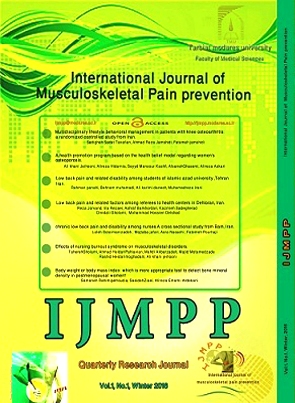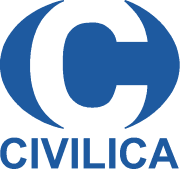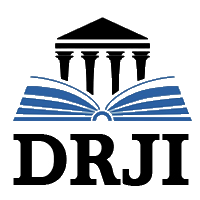Enter your email address
Submit
Write your message









































2476-5279 :pISSN
2476-5279 :eISSN
International Journal of Musculoskeletal Pain Prevention
- Editor-in-Chief: Nastaran Maghbouli
- Manager-in-Charge: Sedigheh Sadat Tavafian
- Publisher: Tarbiat Modares University
- Journal Type: Scientific
- Publication Period: Quarterly
- Access Policy: Open
- Publication Format: Electronic
International Journal of Musculoskeletal Pain Prevention is one of the TMU Press journals that is published by the responsibility of its Editor-in-Chief and Editorial Board in the determined scopes.
Currently known as International Journal of Musculoskeletal Pain Prevention (eISSN 2476-5279).
Formerly known as International Journal of Musculoskeletal Pain Prevention (eISSN 2476-5279).
Aim and Scope:
IJMPP is a peer-reviewed, double-blind, and open-access journal dedicated to the publication of manuscripts on topics concerning musculoskeletal pain prevention, Pain prevention education, and musculoskeletal rehabilitation musculoskeletal pain epidemiology, musculoskeletal pain preventive interventional programs, musculoskeletal pain management, musculoskeletal pain preventive lifestyle, a biopsychosocial interventional program for musculoskeletal pain prevention, multidisciplinary interventional program for musculoskeletal pain prevention. This journal accepts original research, short communications, case reports, reviews, and letters to the editor within the scope of the journal.
Announcements

-
Altered Muscular Synergy of Selected Lower Limb Muscles in Individuals with Patellofemoral Pain Syndrome During Gait
Fatemeh Gholami, Rahman Sheikhhoseini, Mohammad Yousefi, Hamidreza Zanguie
-
Remote Education based on Self-Efficacy Theory (RESET): A randomized trial protocol to reduce health worker burnout with occupational back pain
-
Effect of a Tele-Rehabilitation Exercise Protocol on Pain, Balance, and Function in Females with Patellofemoral Pain Syndrome: A Randomized Controlled Trial
-
A Narrative Review of Occupational Stress and Musculoskeletal Disorders: Risk Factors, Mediators, and Prevention
-
The Effectiveness of Acceptance and Commitment Therapy on Pain Perception, Post-Traumatic Stress Disorder, and Emotional Inhibition in Patients with Chronic Low Back Pain
-
Knowledge and Practice of Registered Nurses about Patient Safety after Cardiac Catheterization in Punjab Institute of Cardiology Hospital in Lahore, Pakistan
Mariam Feroze, Muhammad Afzal, Hajra Sarwar, Amir Galani, Shamila Afshan
-
A Health Promotion Program based on the Health Belief Model regarding Women’s Osteoporosis
Ali khani Jeihooni, Alireza Hidarnia, Seyyd Mansour Kashfi, Afsaneh Ghasemi, Alireza Askari
-
Effects of Nursing Burnout Syndrome on Musculoskeletal Disorders
-
Chronic Low Back Pain and Disability among Nurses: A Cross Sectional Study from Bam, Iran
Solaimanizadeh Laleh, Mojtaba Jafari, Fatemeh Pourhaji, Nassehi Asra
-
Low Back Pain and Related Disability among Students of Islamic Azad University, Tehran Iran
-
Psychological Intervention and Pain Severity among a Sample of Iranian Nurses Suffering from Chronic Low Back Pain: a Randomized Clinical Trial
-
Examining Exercise Behavior Beliefs of Pregnant Women's in Second and third trimester: using Health Belief Model
-
Body weight is a Better Predictor of Bone Mineral Density than Body Mass Index in Postmenopausal Women
Samaneh Rahimi Petroudia, Saeideh Ziaei, Alireza Emami-Ardekani
-
Educational Ergonomic Intervention and Work-related Musculoskeletal Disorders among Office Workers in Tehran, Iran
-
Occurrence of Work Related Musculoskeletal Disorders among School Teachers in Eastern and Northeastern Part of India
-
Determining the cause-effect relationship between risk factors affecting work-related musculoskeletal disorders (WMSDs) using the Fuzzy DEMATEL method
-
Determining the cause-effect relationship between risk factors affecting work-related musculoskeletal disorders (WMSDs) using the Fuzzy DEMATEL method
-
Effectiveness of Pain Metaphor Training on the Mindfulness and Chronic Musculoskeletal Pain
Fatteme Raiisi, Hossein Raisi, Seyedeh Irandokht Senobar Tahaei, Mehdi Bolkhari
-
Effectiveness o in Metaphor Training on the Mindfulness and Chronic Musculoskeletal Pain
-
Comparison of the Effects of the Vivifrail and Locotra Exercise Programs on Motor Per-formance and Quality of Life in Older Adults with Locomotive Syndrome
-
A Brief Review of Cellular and Molecular Changes in Chondromalacia
-
Survey on pain management knowledge and attitude Among emergency nurses in Iran
Somayeh molaee, Nahid Dehghan Nayeri, Arpi Manookian, fereshteh amini, Nafiseh esmaili
-
Effect of Educational Intervention Based on the Ergonomic Principles of Working with Computers in Promoting Behaviors Preventing Musculoskeletal Disorders on Health Care Providers
-
Lifestyle , physical and psychological stress and quality of life in MsculoSkeletal Disorders: part III
-
Design and evaluation of measurement tool for sitting situation using validity and reliability
If you have forgotten your password or username, please use the "password recovery" button. At the modern intelligent Yektaweb website, you can access to all TMU Press journals by a single account.
All prevoiusly sent articles to the old website will be reviewed and processed there and you should login to the old website to track your previously submitted articles.
In tha cases of facing with any technical faults or needing help to continue the journal processes, use the "send ticket" button to connect with Yektaweb SAMA Support Center. All questions will be answered asap.















